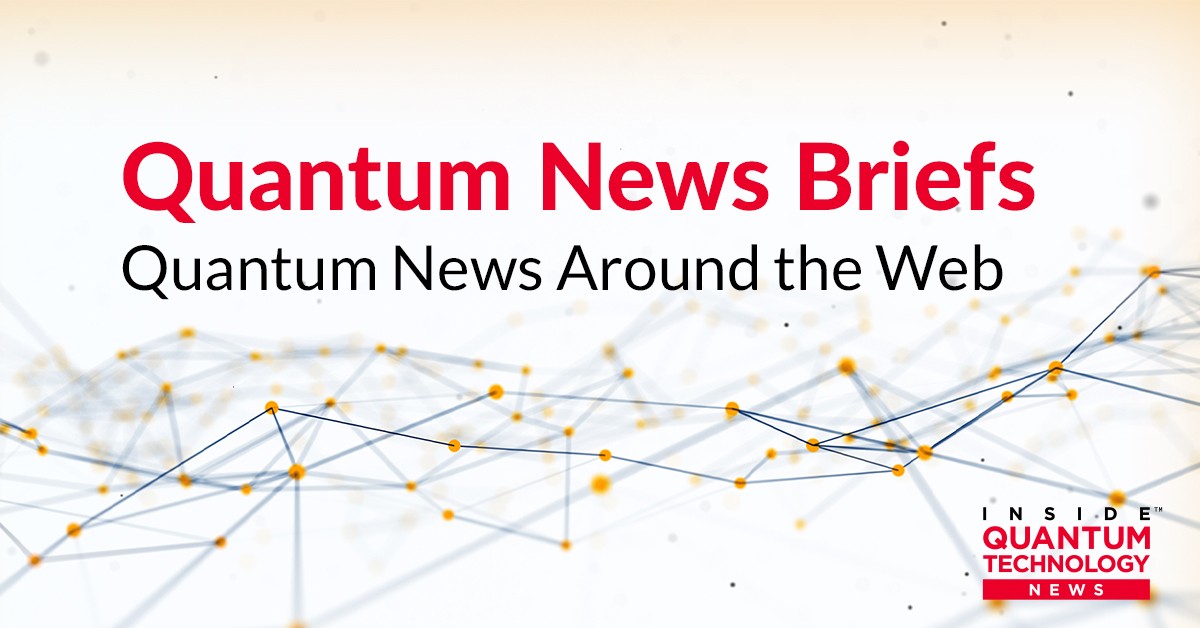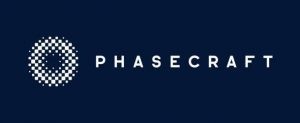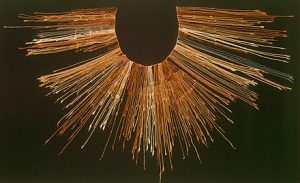Quantum News Briefs August 3: Phasecraft awarded two ‘Commercializing Quantum Technology’ grants in UK, UCLA team’s chemically based quantum computer, Inca knots inspiring new way to encode qubits & MORE

Quantum News Briefs opens today with announcement that Phasecraft has been awarded two UK quantum computing grants followed by report from UCLA-led team developing a strategy for a chemically based quantum computer. An intriguing essay suggesting Inca knots can inspire a new way to encode qubits follows and MORE.
Phasecraft Awarded Two UK Quantum Computing Grants
 Phasecraft, the quantum algorithms company, announced that it has jointly received two research grants from UK Research and Innovation (UKRI) as part of the Commercialising Quantum Technologies Challenge delivered by Innovate UK. Quantum News Briefs shares the announcement here.
Phasecraft, the quantum algorithms company, announced that it has jointly received two research grants from UK Research and Innovation (UKRI) as part of the Commercialising Quantum Technologies Challenge delivered by Innovate UK. Quantum News Briefs shares the announcement here.
In collaboration with BT and Rigetti, Phasecraft will lead a grant-funded project focused on the development of near-term quantum computing for solving hard optimization problems and constraint satisfaction problems. Computational problems in an array of fields including network design, electronic design automation, logistics, and scheduling are characterized by needing to find a solution among exponentially many potential solutions. Such problems are, therefore, exceptionally challenging, yet their applications and commercial potential are vast.
The second grant awarded to Phasecraft supports the development of near-term quantum computing to simulate currently intractable problems in materials modeling for photovoltaics. Leading this project in collaboration with UCL and Oxford PV – a leading company pioneering the commercialization of perovskite photovoltaics – this award will enable the development of a modeling capability that is tailored to the real-world needs of the photovoltaics industry.
*****
Development of a Chemically Based Quantum Computer
 A UCLA-led interdisciplinary research team including collaborators at Harvard University has now developed a fundamentally new strategy for building chemically based quantum computers. While the current state of the art employs circuits, semiconductors and other tools of electrical engineering, the team has produced a game plan based in chemists’ ability to custom-design atomic building blocks that control the properties of larger molecular structures when they’re put together.
A UCLA-led interdisciplinary research team including collaborators at Harvard University has now developed a fundamentally new strategy for building chemically based quantum computers. While the current state of the art employs circuits, semiconductors and other tools of electrical engineering, the team has produced a game plan based in chemists’ ability to custom-design atomic building blocks that control the properties of larger molecular structures when they’re put together.
The findings, published last week in Nature Chemistry, could ultimately lead to a leap in quantum processing power.
“The idea is, instead of building a quantum computer, to let chemistry build it for us,” said Eric Hudson, UCLA’s David S. Saxon Presidential Professor of Physics and corresponding author of the study. “All of us are still learning the rules for this type of quantum technology, so this work is very sci-fi right now
the heart of quantum computing’s transformational potential, depends on the counterintuitive rules that apply when atoms interact. For instance, when two particles interact, they can become linked, or entangled, so that measuring the properties of one determines the properties of the other. Entangling qubits is a requirement of quantum computing. However, this entanglement is fragile.
The scientists in this study developed small molecules that include calcium and oxygen atoms and act as qubits. These calcium-oxygen structures form what chemists call a functional group, meaning that it can be plugged into almost any other molecule while also conferring its own properties to that molecule.
The team showed that their functional groups maintained their desired structure even when attached to much larger molecules. Their qubits can also stand up to laser cooling, a key requirement for quantum computing.
Hudson said that the development of a chemically based quantum computer could realistically take decades and is not certain to succeed. Future steps include anchoring qubits to larger molecules, coaxing tethered qubits to interact as processors without unwanted signaling, and entangling them so that they work as a system.
*****
Inca Knots Inspire New Way to Encode Qubits

Even ancient civilizations kept records. While much of the world used stone tablets or other media that didn’t survive the centuries, the Incas used something called quipu which encoded numeric data in strings using knots. Now the ancient system of recording numbers has inspired a new way to encode qubits in a quantum computer. Hackaday’s Al Williams suggests how Inca knots can inspire encoding of qubits and Quantum News Briefs summarizes below.
With quipu, knots in a string represent a number. By analogy, a conventional qubit would be as if you used a string to form a 0 or 1 shape on a tabletop. A breeze or other “noise” would easily disturb your equation. But knots stay tied even if you pick the strings up and move them around. The new qubits are the same, encoding data in the topology of the material.
In practice, Quantinuum’s H1 processor uses 10 ytterbium ions trapped by lasers pulsing in a Fibonacci sequence. If you consider a conventional qubit to be a one-dimensional affair — the qubit’s state — this new system acts like a two-dimensional system, where the second dimension is time. This is easier to construct than conventional 2D quantum structures but offers at least some of the same inherent error resilience.
*****
Sandia’s Quantum Physicist Timothy Proctor Wins DOE Early Career Award for Quantum Algorithm Research
 Timothy Proctor, a quantum physicist at Sandia, is leading a new research project to help quantum computer scientists write better programs that fail less often. The Department of Energy Office of Science recently selected Proctor for an Early Career Research Program Award, which will support the project for the next five years. Quantum News Briefs shares the announcement from Sandia here.
Timothy Proctor, a quantum physicist at Sandia, is leading a new research project to help quantum computer scientists write better programs that fail less often. The Department of Energy Office of Science recently selected Proctor for an Early Career Research Program Award, which will support the project for the next five years. Quantum News Briefs shares the announcement from Sandia here.
Proctor explained that in quantum circuits — the quantum equivalent of computer programs — how commands are arranged, or structured, can decide whether a computer can successfully run it. “For example, repeating the same instructions again and again can cause certain kinds of errors to build up much more quickly than they would if you were doing some other pattern of instructions,” he said.
In his new project, Proctor will be training an algorithm to discover other patterns and structures that can cause errors. “We know that structure impacts how well the program is going to run, but we don’t know exactly what structures are going to impact it, and it changes from device to device.”
Initially, he wants to create a tool that will tell developers how likely their program is to run on a given quantum computer. In time, he hopes his work will change how programs are written, to reduce errors and make quantum computers more useful.
Proctor came to Sandia six years ago after earning a doctoral degree in quantum physics from the University of Leeds in England. Since joining Sandia, Proctor has worked in the Quantum Performance Lab, a research group that develops and deploys cutting-edge techniques for assessing quantum computers. Not only has the work been interesting, he said, but the mentorship has been extraordinary.
Now, the Early Career Research Award will allow him to expand his own team, and he’s excited to onboard and mentor other early career scientists.























